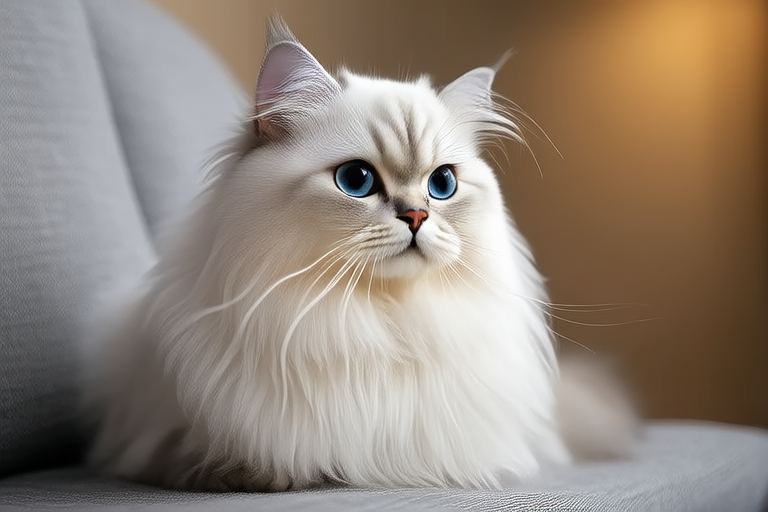
Persian Cats: A Comprehensive Guide
The Persian cat is one of the most beloved and recognizable breeds in the world. Known for their luxurious coats and gentle demeanor, these felines have captured the hearts of cat lovers for centuries. This guide delves into the history, characteristics, and care of Persian cats, offering valuable insights for both potential and current owners.
Origins and History
The Persian cat’s origins trace back to ancient Persia, now modern-day Iran. These cats were first introduced to Europe in the 1600s by Italian nobleman Pietro della Valle. They quickly became a favorite among European aristocracy and royalty. Over time, selective breeding has enhanced their distinctive features, making them one of the most popular cat breeds today.
Physical Traits
Persians are medium to large-sized cats with a robust, muscular build. Their hallmark feature is their long, silky coat, which requires regular grooming to maintain its lustrous appearance. The breed comes in a wide array of colors and patterns, including solid colors, tabby, tortoiseshell, and bi-color variations. Their large, round eyes and short snouts add to their distinctive appearance.
Grooming Needs
Due to their luxurious coats, Persian cats require daily brushing to prevent matting and remove loose hair. Regular bathing is also necessary to keep their fur clean and healthy. Additionally, it’s important to trim their nails regularly and check their ears for signs of infection or wax buildup. Proper grooming helps maintain their overall health and appearance.
Temperament
Persians are known for their calm and gentle nature. They are affectionate towards their human companions but tend to be less active than other breeds. They enjoy lounging around the house and often prefer quiet environments. While they can be playful, their activity levels are moderate, making them ideal for households seeking a relaxed, companionable pet.
Health Considerations
Like all purebred cats, Persians may be prone to certain health issues. Common concerns include polycystic kidney disease (PKD), respiratory problems due to their flat faces, and dental issues. Regular veterinary check-ups and a balanced diet are crucial for maintaining their health. Early detection and management of these conditions can significantly improve their quality of life.
Popular Myths
One common myth about Persian cats is that they are lazy. While they do enjoy lounging, they are capable of being playful and interactive when given the opportunity. Another misconception is that all Persians have respiratory problems. While brachycephalic cats (those with shorter snouts) are more susceptible, not all Persians suffer from breathing difficulties. Proper care and genetics play a significant role in their overall health.
Selecting a Persian Cat
When choosing a Persian cat, it’s essential to find a reputable breeder who prioritizes the health and well-being of their cats. Look for breeders who provide health certificates and information about the parents’ medical history. Meeting the kitten in person before purchase is advisable to ensure they exhibit good health and temperament. Adopting from a rescue organization is another option, providing a loving home to a Persian in need.
Tips for Owners
Owning a Persian cat comes with unique responsibilities. Providing a comfortable living environment, a nutritious diet, and regular veterinary care are paramount. Engaging in regular play sessions can help stimulate their minds and bodies. Additionally, creating a safe space where they can retreat when needed ensures their well-being. Establishing routines and consistency in care fosters a strong bond between owner and pet.
The Unique Bond
Persian cats form deep, affectionate bonds with their human companions. They thrive on attention and affection, often seeking out their owners for cuddles and companionship. Their gentle nature makes them excellent pets for families with children or other pets. Building trust and understanding with your Persian cat enhances the bond and enriches the relationship.
Famous Persian Cats and Media Mentions
Persian cats have made appearances in various forms of media, from books to films. One notable example is Cheshire Cat from Lewis Carroll’s “Alice’s Adventures in Wonderland,” whose character has been portrayed by several Persian cats. In the film “Cats,” a Persian named Bombalurina captivated audiences with her elegant presence. These portrayals highlight the breed’s enduring appeal and charm.
Conclusion
Persian cats are a breed of elegance and grace, offering companionship and joy to their human families. Their luxurious coats and gentle demeanor make them a cherished addition to many homes. By understanding their history, characteristics, and care requirements, owners can provide the best possible life for their Persian cat. Embracing the unique bond formed with these felines enriches both the lives of the cats and their human companions.






